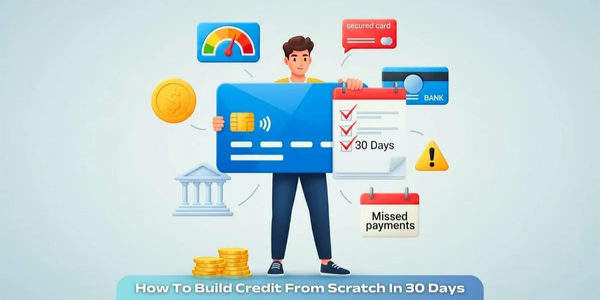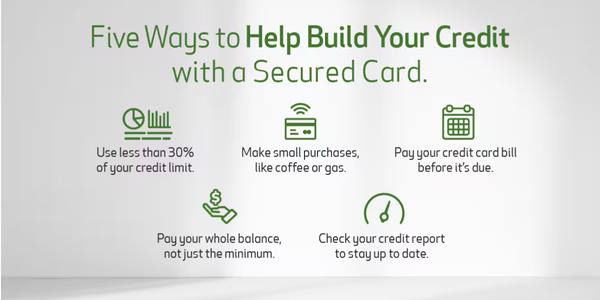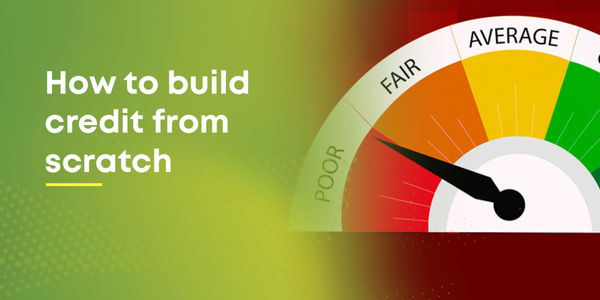Building credit can feel like a chicken-and-egg dilemma—how do you get credit if you’ve never had any? Whether you’re a recent graduate, new to the country, or just getting started with your financial journey, learning how to build credit from scratch is one of the most empowering moves you can make for your future.
Credit isn’t just about getting a credit card—it impacts everything from renting an apartment to landing certain jobs. The good news? With the right steps and some discipline, anyone can go from zero to a solid credit score in a matter of months.
Let’s dive into how you can take control of your credit story—starting today.
Why Credit Matters
Before we get into the “how,” let’s talk about the “why.”
What Is Credit?
Credit refers to your ability to borrow money or access goods and services with the understanding that you’ll pay later. Your credit history is tracked by credit bureaus and summarized in your credit score—a three-digit number that tells lenders how trustworthy you are as a borrower.
What Is a Good Credit Score?
FICO scores range from 300 to 850. Here’s the breakdown:
-
300–579: Poor
-
580–669: Fair
-
670–739: Good
-
740–799: Very Good
-
800–850: Excellent
A good credit score helps you:
-
Get approved for loans and credit cards
-
Qualify for better interest rates
-
Rent apartments with ease
-
Lower insurance premiums
-
Even pass background checks for jobs

Step-by-Step: How to Build Credit from Scratch
Now let’s get into the practical steps you can take right now to start building your credit.
1. Start with a Secured Credit Card
What Is a Secured Credit Card?
It’s a credit card backed by a cash deposit. You deposit, say, $200, and your credit limit is $200. This protects the lender while giving you the chance to prove yourself.
Why It Works
-
Easy to qualify for
-
Reports to all three major credit bureaus (Experian, Equifax, TransUnion)
-
Builds your payment history, the most important factor in your score
Tips:
-
Use it for small, regular purchases (like gas or groceries)
-
Pay off the full balance each month
-
Keep your credit utilization below 30%
2. Become an Authorized User
How It Works
Ask a parent, spouse, or trusted friend to add you to their existing credit card as an authorized user. You’ll benefit from their good payment history without being responsible for the bill.
What to Watch Out For
-
Make sure the primary account holder has a good payment record
-
Confirm the card reports authorized users to the credit bureaus
This is one of the fastest ways to jump-start your credit score—often within a few months.
3. Apply for a Credit-Builder Loan
What Is It?
A credit-builder loan is a small loan—usually between $300 and $1,000—held in a bank account while you make payments toward it. Once you’ve paid in full, you receive the money.
Where to Get One
-
Local credit unions
-
Online lenders like Self, SeedFi, or CreditStrong
-
Community banks
This type of loan is specifically designed for people with no credit history.
4. Use a Rent-Reporting Service
Why It Helps
Most landlords don’t report your rent payments to the credit bureaus—but you can change that. Services like RentTrack, Rental Kharma, and Experian Boost can report your rent and utilities to improve your score.
Bonus: These platforms often report other bills too, like phone or internet.

5. Keep Your Credit Utilization Low
Credit utilization is how much of your available credit you’re using. For example, if your credit limit is $1,000 and you’re carrying a $500 balance, your utilization rate is 50%—too high.
Ideal Range:
Keep it under 30%—and under 10% for optimal results.
Tips to manage it:
-
Set up balance alerts
-
Pay your bill multiple times a month
-
Ask for a credit limit increase after six months of on-time payments
6. Always Pay on Time
Your payment history makes up 35% of your credit score. Even one missed payment can hurt your score for months.
Best Practices:
-
Set up automatic payments
-
Use reminders or calendar alerts
-
Pay at least the minimum amount due
On-time payments are the #1 way to build trust with lenders and improve your credit.
7. Monitor Your Credit Regularly
Free Tools to Use:
-
Credit Karma
-
Credit Sesame
-
AnnualCreditReport.com (official free credit report site)
These platforms help you track your score, understand changes, and watch for fraud or errors on your credit report.
8. Avoid These Common Mistakes
Building credit from scratch doesn’t mean diving into debt or making risky financial choices.
Avoid:
-
Applying for multiple credit cards at once
-
Closing your first credit card too soon (it shortens your credit history)
-
Co-signing for others who may not pay responsibly
-
Carrying high balances “to build credit”—it’s a myth!
Real-Life Example: Maria’s Credit Journey
Maria, a 22-year-old recent college graduate, had never had a credit card or loan. She started with a $200 secured credit card and used it for groceries, paying off the balance in full each month. After 6 months, she applied for a credit-builder loan through her credit union and also got added as an authorized user on her mom’s credit card.
Within 9 months, Maria had a score of 720 and was pre-approved for her first apartment. Her secret? Patience, planning, and paying on time.

How Long Does It Take to Build Credit?
Typically, you can establish a FICO credit score within 3 to 6 months if your accounts are reported to the bureaus.
Timeline Overview:
-
0–3 Months: Open accounts and begin payments
-
3–6 Months: Credit score becomes visible
-
6–12 Months: Score improves with on-time payments and low utilization
-
12+ Months: You can start qualifying for better credit cards and loan offers
Remember, building credit is a marathon, not a sprint. Stay consistent.
Final Tips for Success
-
Be patient—credit scores take time to grow
-
Focus on payment history and credit utilization
-
Keep old accounts open to lengthen your credit history
-
Only borrow what you can afford to repay
Credit is a tool, not a trap. When used wisely, it opens doors to financial opportunities and long-term wealth building.
Call to Action
Have a question or want to share your own credit journey? Drop a comment below!
Explore our Personal Finance Tips section for more guides, or check out our next article on Best Credit Cards for Beginners.


